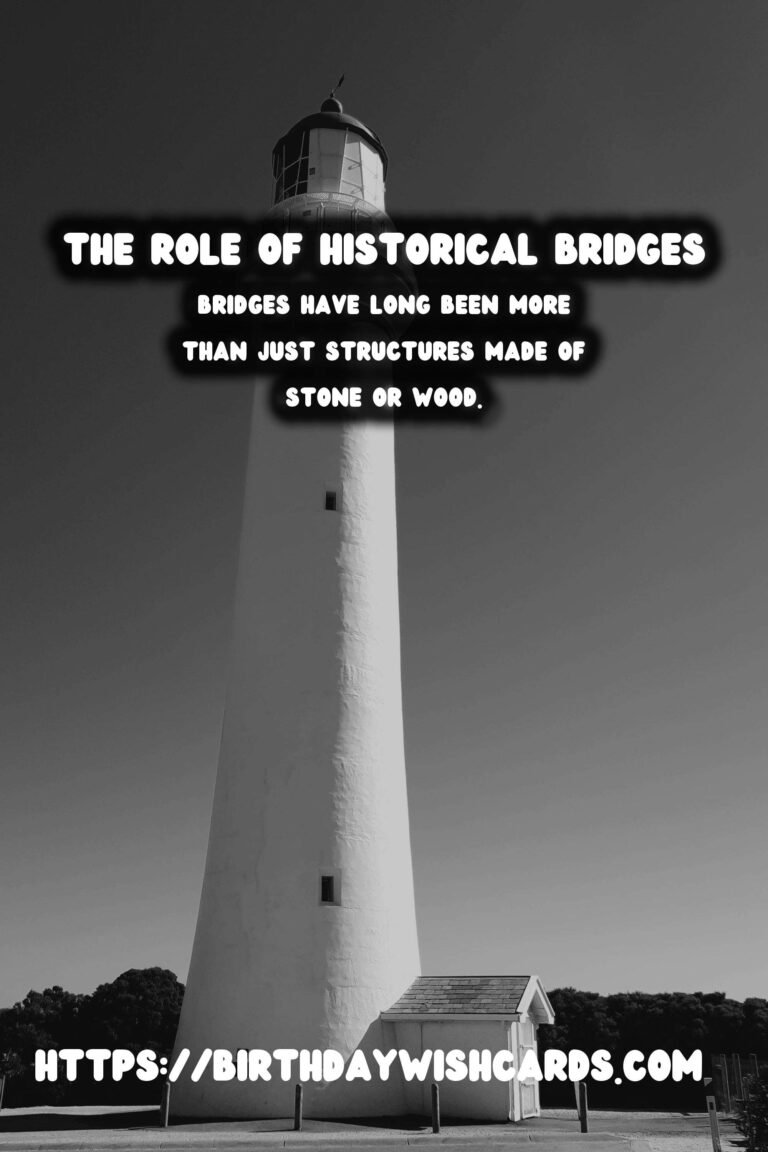
Bridges have long been more than just structures made of stone or wood. They serve as critical connectors, binding communities across rivers, valleys, and sometimes entire nations. Historical bridges, in particular, represent engineering marvels and have played pivotal roles in shaping trade and communication pathways, influencing the economic and social dynamics of their times.
The Evolution of Bridges Through History
From the first plank of wood laid across a stream to the magnificent spans of stone and iron, bridges have evolved remarkably. The earliest known bridges were simple structures, but as empires rose and fell, the necessity for more robust and durable bridges increased significantly. The Romans, for instance, were masters in bridge construction, employing arches and creating aqueducts that not only facilitated trade but also supplied water to civilizations.
During the medieval period, the construction of bridges witnessed a surge, mostly driven by the expansion of trade routes. The development of Gothic bridges in Europe, with their pointed arches, is a testament to the architectural innovations of the time. These bridges were not only functional but also served as symbols of power and technological prowess.
The Impact of Bridges on Trade
Trade has always been a cornerstone of human civilization, and bridges have often been at the forefront of facilitating this. By connecting previously isolated communities, bridges opened up new opportunities for commerce. They allowed for the safe and efficient movement of goods and people, reducing the time and effort required to transport merchandise across challenging terrains. The Silk Road, a network of trade routes, included several critical bridges that enabled the exchange of goods, culture, and ideas between the East and West.
Moreover, historical bridges were often constructed near markets, towns, and cities that depended on trade. They boosted local economies and were instrumental in the spread of trade in natural resources, precious metals, and textiles, thus directly contributing to the wealth and prosperity of nations.
Bridges as Communication Channels
In addition to trade, bridges have significantly impacted communication between peoples. The exchange of information, culture, and technology often followed the paths laid down by these structures. In ancient times, bridges facilitated postal services and the movement of armies, which was crucial for the dissemination of information and military strategies.
The presence of a bridge often marked a strategic advantage in warfare, which is why many historical battles revolved around key bridges. They allowed not only the movement of troops but also served as conduits for communication across diverse regions, uniting kingdoms and enabling diplomatic relations.
Architectural Wonders of Historical Bridges
While their functional role in trade and communication is paramount, historical bridges are also celebrated for their architectural brilliance. The Charles Bridge in Prague, the Ponte Vecchio in Florence, and the London Bridge are iconic examples of how functionality and aesthetics can blend harmoniously.
These bridges are not merely transportation channels; they are also cultural landmarks that attract tourists from all over the world. They welcome visitors, narrating their histories through every stone and curve, reminding us of the ambitions and achievements of those who built them.
Crafted over centuries, each bridge tells its unique story of transformation, while standing as a legacy of engineering that continues to inspire modern architects and engineers.
The Enduring Legacy of Historical Bridges
In conclusion, historical bridges are much more than remnants of the past. They are enduring reminders of humanity’s ingenuity and resilience. Although some no longer serve their original purposes, they continue to inspire awe and admiration.
Today, these bridges remind us of the importance of connection, both physical and metaphorical. As contemporary society continues to build bridges—both literal and figurative—we are reminded of the enduring power of human connection and the role of infrastructure in advancing civilization.
These majestic structures, some of which have withstood the test of time for centuries, highlight the eternal network of trade and communication that remains vital in our interconnected world.
Bridges have long been more than just structures made of stone or wood. They serve as critical connectors, binding communities across rivers, valleys, and sometimes entire nations.
#HistoricalBridges #TradeAndCommunication

